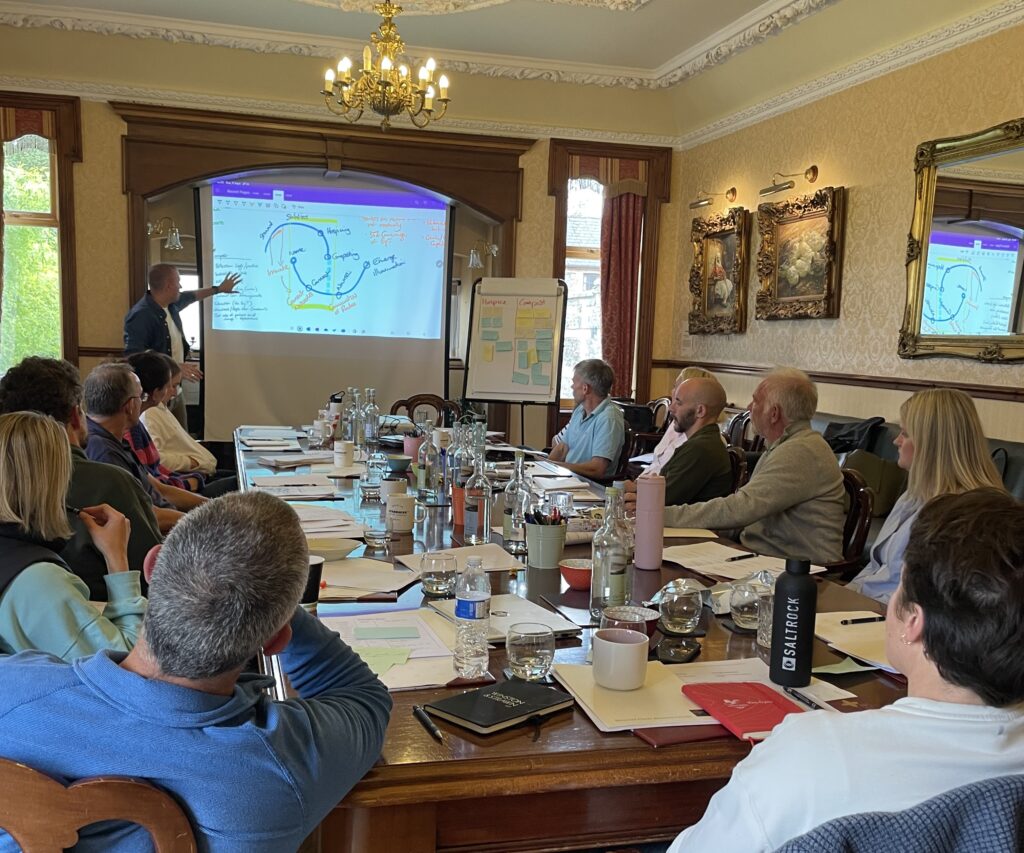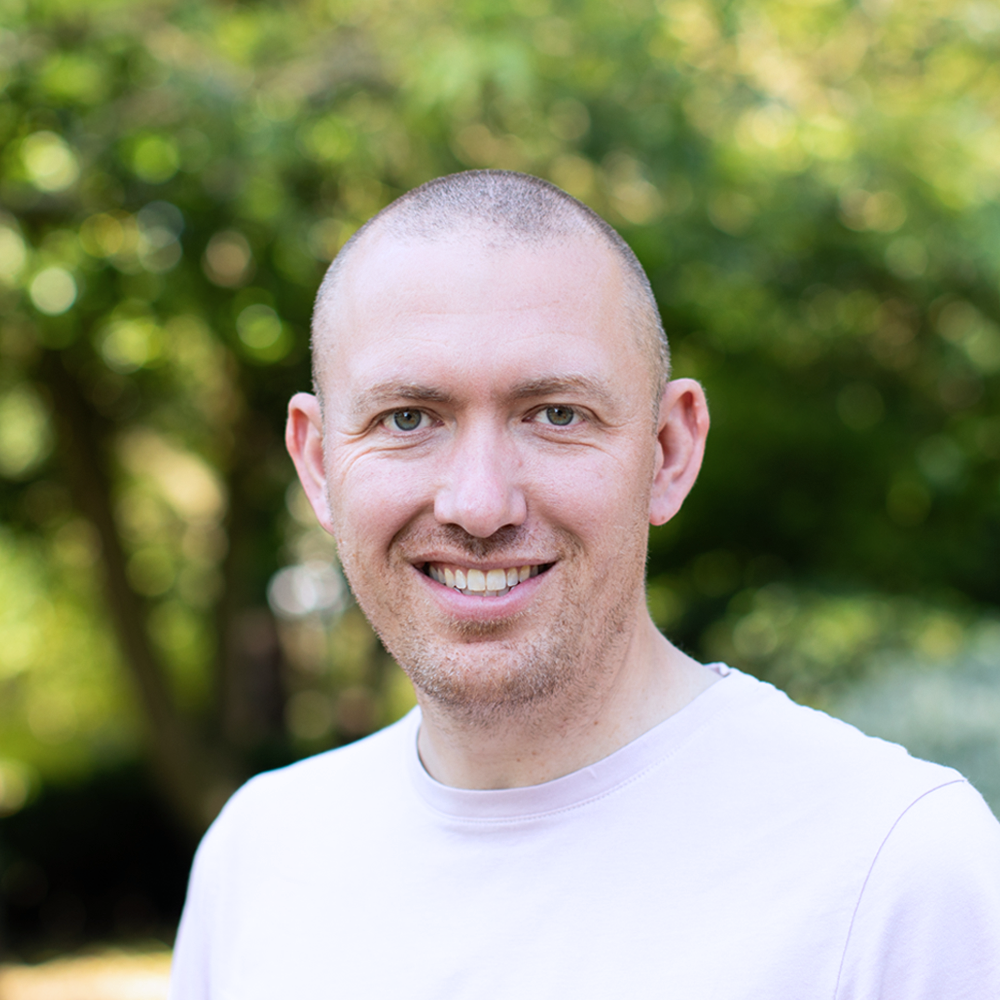An Introduction to the Two Loops Model for the Physical Activity Sector
Let’s be honest, system change can feel abstract: easy to talk about, harder to do. Especially when you’re in the thick of it. Whether you’re running community programmes through a football foundation, working in a council’s public health team, or trying to stitch together partnerships across a place, it can be hard to wrestle with the bigger picture when you’re juggling delivery pressures, constant shifts in local context, and real-world community needs.
In translating some of the ideas into practice, and thinking about our roles, the Two Loops Model developed by Berkana Institute can maybe help. It’s a simple but powerful way of thinking about how systems evolve and how change really happens – not in one big leap, but as old ways decline and new ones emerge, often at the same time.
The Two Loops Model diagram shows two curves. The top one represents the dominant system or paradigm; the way things are currently done. In our case, that might be the traditional delivery of sport and physical activity through structured programmes, leisure centres, performance targets, and siloed commissioning. The second curve, underneath, represents the emergence of something new. This something new is maybe more community-rooted, values-led, inclusive approaches that see physical activity as a tool for wellbeing, belonging, and connection, embedded in everyday life.
The first loop rises, peaks, and begins to decline. At the same time, the second loop starts small, grows quietly, and can eventually become the new normal. This isn’t a smooth or automatic process; it takes people proactively engaged in systems leadership. That’s where roles come in.
The Innovators
At the height of the first loop and the start of the second. They’re the ones who see possibility before others do. They might be on the ground, close to communities, maybe a youth worker testing new ways to engage girls in sport, or a GP designing movement-based prescriptions with patients. They don’t wait for permission; they start small, adapt, and learn as they go. In the physical activity system, this could be people piloting something genuinely different; something that values relationships over reach and impact over outputs. They’re the sparks at the edge of the system, lighting fires that others might not notice until they catch – sometimes the sparks fizzle, sometimes they ignite something bigger. Either way, they show us where the energy is shifting.
Innovators often rub up against the traditional systems, because their work doesn’t fit the usual KPIs. But they’re vital. They’re showing us what the future could look like – if we’re paying attention.
The Connectors
Then there are the connectors. These are the people who spot patterns, build bridges, and bring people together across boundaries. Maybe it’s someone in an Active Partnership convening a local network that includes leisure providers, voluntary groups, NHS staff, and schools. They’re not trying to generate new funding, or manage delivery or design a new scheme, but to share learning and build relationships. Or it could be someone in a council role who understands that commissioning isn’t just about funding services – it’s about investing in shared purpose and creating the conditions for sustainable change.
Connectors are crucial for helping ideas move. They notice what’s working and help it spread They’re not focused on scaling in the traditional sense. Instead, by creating the conditions for others to adapt and adopt what they need, they help ensure the second loop doesn’t stay isolated.
Who are the bridge-builders you know – the people always introducing, convening, connecting dots?
The Hospice Workers
And then, we have the hospice workers – a role that can feel slightly uncomfortable but is deeply necessary. These are the people who help aspects of the old system die well. Not everything in the dominant paradigm is bad; but some parts no longer serve us. Systemic hospice workers bring compassion and clarity to this process. They might lead the transition away from a leisure centre that no longer meets the community’s needs; or help a long-standing programme find a dignified end while celebrating what it contributed.
Hospice workers don’t tear things down. They honour the past, learn from it, and make space for what’s emerging. In the public and charitable sectors, this role often falls to experienced leaders who’ve seen the cycles before and can hold uncertainty with wisdom.
Other Roles: Protectors, Storytellers, and Guides
The model also highlights other important roles, each of which play a vital part – like protectors, who create safe spaces for the new to grow (think local commissioners who make room for small-scale experiments without forcing them to prove impact too early). Or storytellers, who help us make sense of what’s changing through narrative, shared values, and language (perhaps through local newspapers, funder briefings, or even WhatsApp groups). And guides – those trusted people others turn to for perspective and encouragement in uncertain times.
In truth, many of us play several of these roles at different times. The point is not to fix the system overnight – it’s to understand where we are in the transition and where our energy is best placed.
Why This Model Matters Now
Across the UK, we’re seeing more places wrestling with system change in the physical activity space, particularly through Sport England and other government investment approaches. We’re moving beyond “get more people moving” towards deeper questions about equity, belonging, and the root causes of inactivity. It’s not just about moving more. It’s about fairness. It’s about belonging. It’s about changing what sits underneath inactivity. That shift requires new thinking and new roles.
The Two Loops model doesn’t give us a step-by-step plan. But it can offer a lens. It helps us understand why some things feel hard right now (because the old system is declining), why new ideas often feel fragile (because they’re early in their loop), and how we might support each other to keep going.
Consider this: what loop are you most active in? And which role (or combination of roles) might you be playing already? Where do you see yourself in the two loops today?
Change doesn’t start with a system. It starts with people. With you.

